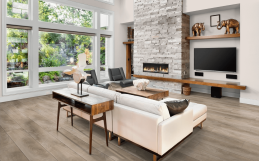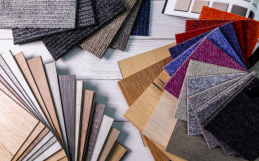When it comes to purchasing the right flooring for your home, the more knowledgeable you are, the better! When buying or installing carpet in your home, you may find yourself confronted with a term or two that you’re not familiar with. At Bigelow Flooring, it’s our pleasure to make sure you understand the terminology that you might come across in your search for carpet.
- Backing – The back of the carpet, which is divided into two parts: primary and secondary. The primary backing is the structure for the tufts of carpet, while the secondary backing acts as a barrier between the carpet padding and the floor.
- Berber – Berber is a type of carpet which is made from naturally undyed wool.
- Broadloom – Any kind of carpet that is wider than six feet.
- Carpet cushion or carpet padding – A layer of cushion that is installed between the floorboards and the carpet. Carpet padding makes the carpet feel softer under your feet.
- Crush – Crush happens to carpet with high traffic or heavy furniture and causes the fibres to bend.
- Denier – The thickness of each strand of carpet is referred to as the denier. The thinner the carpet, the softer it will be.
- Fibre – Fibre is the material that carpet is made out of and the most important part of the carpet.
- Pile – Pile is the visible part of the carpet, or the part of the carpet that you walk on. Pile can be either cut or loop; cut carpet means that the tufts are straight, whereas loop pile is left uncut.
- Pile height – Pile height refers to the height from the carpet backing to the carpet’s surface.
- Pilling – Like your favourite sweater, some carpets pill when the tufts become tangled, most often in high traffic areas.
- Resilience – Resilience refers to the carpet’s ability to resist crushing or indentations.
- Synthetic – Many carpets are made with a man-made material called synthetic.
- Tufts – Carpet fibres are wound into groups of fibres called tufts. Tufts are the individual pieces of carpet that you can see when you look at a carpet up close.
- Watermarking or pooling – If you’ve ever noticed your carpet looks different from different angles, this is watermarking or pooling. When carpet pile fibres bend, they reflect light in different ways, making the colour look different.
At Bigelow Flooring in Guelph, our team of flooring experts can help you choose the right carpet for your home. Contact us or visit our showroom to get started.
Related Posts






